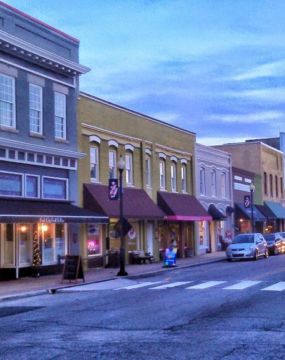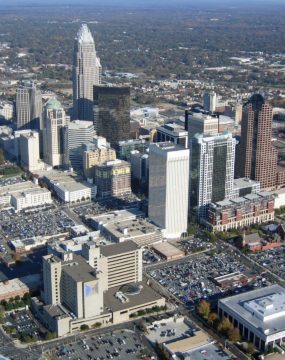Keep up with our latest demographic insights

There is a newer version of this blog post available: North Carolina’s Hispanic Community: 2019 Snapshot Series note: This post and the next few in the series are the outgrowth of a presentation jointly developed with Dr. Krista M. Perreira and presented by Dr. Perreira to the October meeting of the North Carolina Governor’s Advisory Council on Hispanic/Latino Affairs. Terminology note: The U.S. Census Bureau introduced the term Hispanic in 1980 and this is a…

July 2015 to July 2016 was the largest year of population growth for the state of North Carolina for any single-year period since the last decennial Census (2010). This was also the case for 124 of North Carolina’s municipalities, including several with previously slim or even declining population growth. These places are labeled and represented by colored markers on the Story Map below. The table accompanying each point compares the numeric and percentage growth year-to-year…

Population can grow—or decline—from one of two components of change: net migration (both domestic and international) or natural growth (births and deaths). Both components have contributed to North Carolina’s population growth. Every year since 1980, North Carolina has had more births than deaths, meaning the population has grown from natural increase. The level of natural increase peaked in the late 2000s and has since declined significantly, reflecting the combined impact of fertility declines and population…

Despite substantial growth in some areas of the state, a large portion of North Carolina has seen little to no population increase. Of North Carolina’s 553 municipalities, 225, or about 41%, experienced population decline from 2010-2016. An additional 192 reported growth that was lower than 6.4%, the state’s growth rate since 2010. In total, three of every four North Carolina municipalities have lost population or grown slower than the state since 2010. The northeast corridor…

North Carolina’s population, much like the nation at large, is growing older and more diverse. The new 2016 detailed population estimates from the U.S. Census Bureau provide data on the age, sex, and racial/ethnic composition of state and county populations. In North Carolina, the 65 and older population grew from 1.2 million in 2010 to 1.6 million in 2016, an increase of 335,000 or 27%. As of 2016, 15.5% of North Carolina’s population was 65…

The U.S. Census Bureau recently made its 2016 population estimates available, and the topline trends for North Carolina has maintained a nearly identical trajectory as 2015. Since the last decennial Census in 2010, North Carolina has seen its urban metropolitan areas grow consistently larger, while small, often rural municipalities have struggled to maintain population. North Carolina’s two largest metropolitan statistical areas – Charlotte-Concord and the Triangle (Raleigh-Durham-Chapel Hill) – have driven much of North Carolina’s…
North Carolina’s population grew by 112,000 between 2015 and 2016, the largest single year increase since 2010, according to new data from the U.S. Census Bureau. With a growth rate of 1.1%, North Carolina’s 2015-16 growth was faster than the national growth rate (0.7%) and similar to the South’s regional rate (1.1%). Overall, North Carolina’s population has grown by 611,000 since 2010, an increase of 6.4%. The uptick in population growth was fueled by an…
In his recent article about diversity in young Americans, William Frey points to “a noteworthy demographic dynamic [that] is making the young post-millennial generation more racially diverse – the absolute decline in the number of white children (persons under age 18).” This, too, is happening in North Carolina. In 2015, North Carolina had 57,000 fewer white children than in 2010, with the declines most pronounced at ages 10 and under. These declines may be partly…
“Minorities comprise more than half of the millennial populations in 10 states, including Texas, Arizona, Florida, Georgia, and New Jersey. In 10 additional states, including New York, Illinois, Virginia, North and South Carolina, minorities comprise more than 40 percent of millennial residents. Other states have whiter millennial populations, but only nine states are home to largely (over 80 percent) white millennial populations (e.g. Wyoming, Iowa, West Virginia, and Maine).” – William Frey, Diversity defines the…
Over at Old North State Politics (and on Twitter as @BowTiePolitics), Dr. Michael Bitzer of Catawba College has been diving into the State Board of Elections registered voter data to understand demographic and partisan trends in voter registration. In response to recent posts about generational patterns, someone asked: “What percentage of each generation remains unregistered to vote in North Carolina?” Our estimates indicate that 14% of voting-eligible Millennials (ages 18-34 in 2016) and 8% of…
Your support is critical to our mission of measuring, understanding, and predicting population change and its impact. Donate to Carolina Demography today.